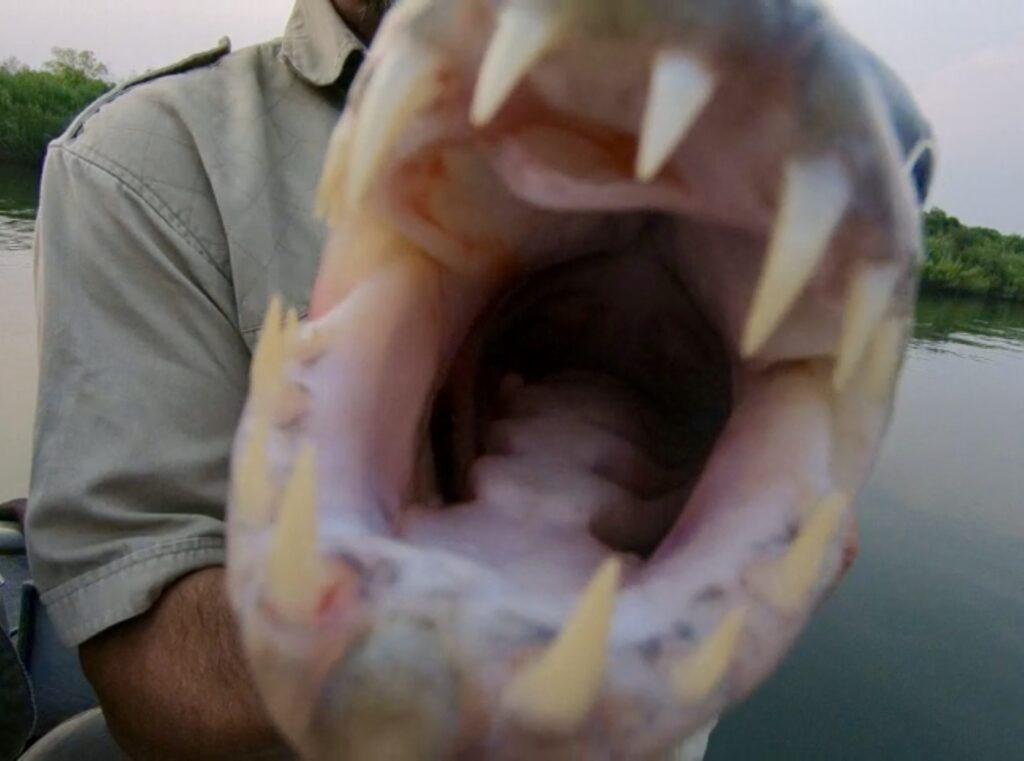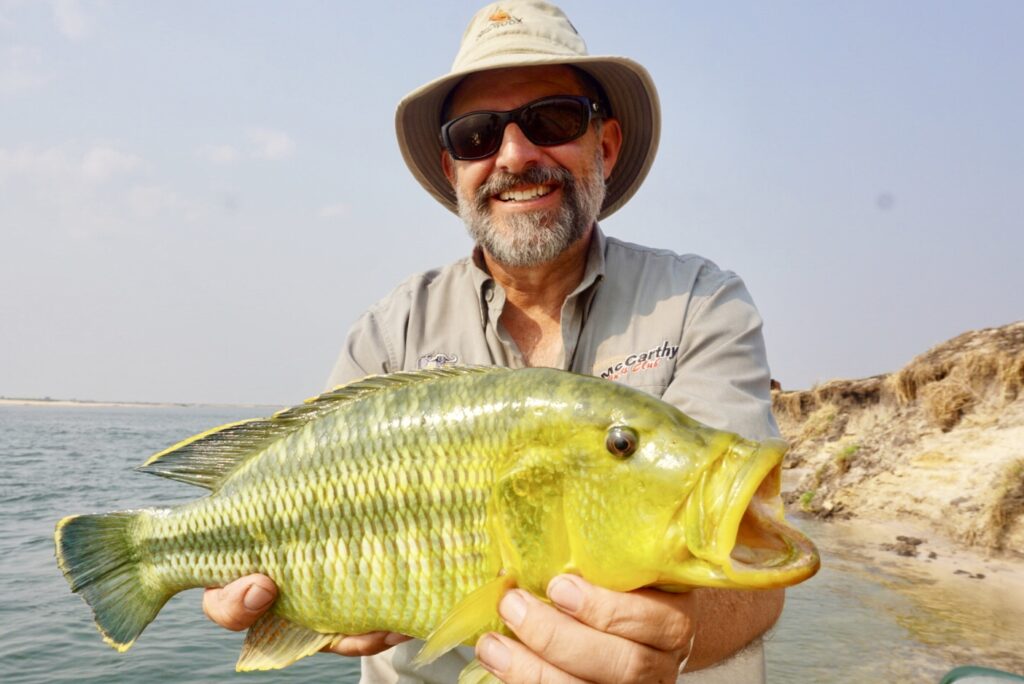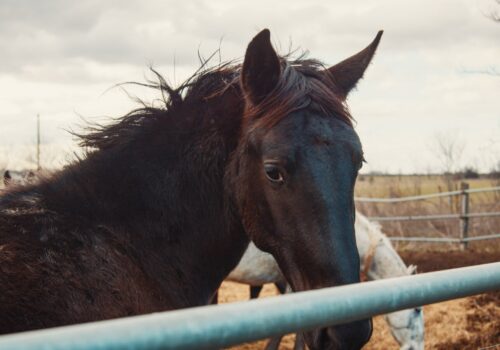
Tigers on the Zambezi
By Brian Smith
I was trying to balance on the front platform of the 17-foot bass boat with the waters of the great Zambezi River flowing underneath as we drifted with the current. I had just finished another strip retrieve and lifted my 8-weight rod to do a water haul to load the rod and cast back up river to complete another drift. The big Clouser Minnow hit the water as I lowered the rod tip to let it sink and start another drift. Just as I was midway through the drift I felt a slight tug, so I lifted the rod to give it a quick jerk and then things started to get interesting. My line started moving very quickly up river, and Vincent my guide, told me to strike again, then again. I had a Tiger on the line and these toothy critters have very hard mouths and you must drive the hook home on the set. I was fishing with large Clousers tied on 1/0 Gamakatsu hooks.
They have chemically sharpened ends and I had it tied to a wire leader. Months before I spent my evenings tying different variations of Clousers, Deceivers, and Brush flies in anticipation of this trip. This one was tied with red and black bucktail. The big fish made a good run and I thought he may not stop until he was to the Congo, however he did slow down before we got down to the backing and started to try to work him back towards the boat. We played this game for 20 minutes as we watched the big fish go airborne on several occasions about 40 yards from the boat. Every time I got him up within sight, close to the boat, he would make another run. These fish take a while to wear down. Eventually I worked him towards the front end of the boat where Vincent was able to work the net under this beautiful fish and haul him onto the boat. The African Tiger fish is a clean looking fish with vertical striping that reminds me of the striped bass in our fisheries back home. They have a large mouth like most species of bass with rows of sharp conical teeth that are fairly spaced apart that give it a very menacing look. The tail and fins are a bright red/orange color. It truly is a very attractive looking fish that looks as though it could easily take off a few fingers in one bite. I had hauled in quite a trophy, this was a 13.5-pound fish; many people fish for these critters their whole lives and do not catch one this large and this was my first Tiger fish I had ever seen in person.

The day before we had a long drive from the Eastern side of Zambia in the Luwanga Valley where we had been hunting Buffalo. The Matoya Lodge, where we were fishing, was on the far Western side of the country, formerly known as Northern Rhodesia, in the Barotse flood plains of the Zambezi river. We overnighted in Lusaka, the capital of Zambia, then continued the journey to the fishing lodge. Matoya Lodge is in a very remote area that is difficult to gain access to. The last 30 minutes we traveled by boat up the river to the lodge. The lodge was set up very nicely with generators, thatched huts, a nice bar area and swimming pool. It was quite relaxing once we arrived; however the drive from Eastern Zambia was quite the ordeal. There were times where I doubted our ability to navigate what they called roads. I would describe them as roughly cut trails that were badly rutted from the rainy season. We had flown into the hunting area from Lusaka on a charter plane which had tossed us around a good bit in the afternoon thermals prior to landing on the small dirt strip. I shared the charter with another hunter that was flying out of camp at the same time. Since no one else was coming in we decided to hire a driver and Land Cruiser to take us back to Lusaka and then on to the lodge the next morning. Somewhere along the ride I swore I would pay any price for that little charter plane to pick us up from where we were; oh well, you live and you learn. A word to the wise, take the flight, do not drive across Zambia.

We continued to fish for several days and my South African Friend Wighardt and I were able to catch several nice Tigers, the first one being my largest. We also fished for the giant African bream and I was able to haul in a nice Nembwe, also known as the Yellow Belly Bream. This is a brightly colored fish that is Green and Yellow; we caught them light spinning gear bouncing jigs of off the bottom. They are a hard-hitting predator fish. I would highly recommend the trip, especially this fishery and lodge. It is very remote and the area is completely catch and release. Because of this, the trophy quality was great and I was able to have a nice fiberglass mount of my fish made by Grey Taxidermy once I returned to the States.
Brian Smith
Brian R. Smith is an avid outdoorsman passionate about fly fishing, wing shooting, Safari hunting, and equestrian activities. He lives with his wife Gretchen in Alabama, and together they enjoy spending time with their horses and sporting dogs on trails, rivers, and in the sporting field. To read more of Brians adventures, you can follow him on Instagram @bohemianadventure


You May Also Like

Southern Literature to Cozy Up With
January 4, 2024
Finding Solace in Roosevelt: A Story of Healing and Rediscovery
March 18, 2024